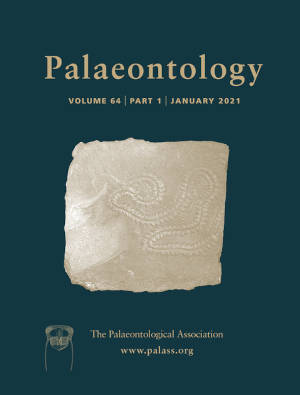Reg. Charity No. 1168330

Ecology and morphology are different, and yet in comparative studies of fossil vertebrates the two are often conflated. The macroevolution of Mesozoic marine tetrapods has been explored in terms of morphological disparity, but less commonly using ecological‐functional categories. Here we use ecospace modelling to quantify ecological disparity across all Mesozoic marine tetrapods. We document the explosive radiation of marine tetrapod groups in the Triassic and their rapid attainment of high ecological disparity. Late Triassic extinctions led to a marked decline in ecological disparity, and the recovery of ecospace and ecological disparity was sluggish in the Early Jurassic. High levels of ecological disparity were again achieved by the Late Jurassic and maintained during the Cretaceous, when the ecospace became saturated by the Late Cretaceous. Sauropterygians, turtles and ichthyosauromorphs were the largest contributors to ecological disparity. Throughout the Mesozoic, we find that established groups remained ecologically conservative and did not explore occupied or vacant niches. Several parts of the ecospace remained vacant for long spans of time. Newly evolved, radiating taxa almost exclusively explored unoccupied ecospace, suggesting that abiotic releases are needed to empty niches and initiate diversification. In the balance of evolutionary drivers in Mesozoic marine tetrapods, abiotic factors were key to initiating diversification events, but biotic factors dominated the subsequent generation of ecological diversity.